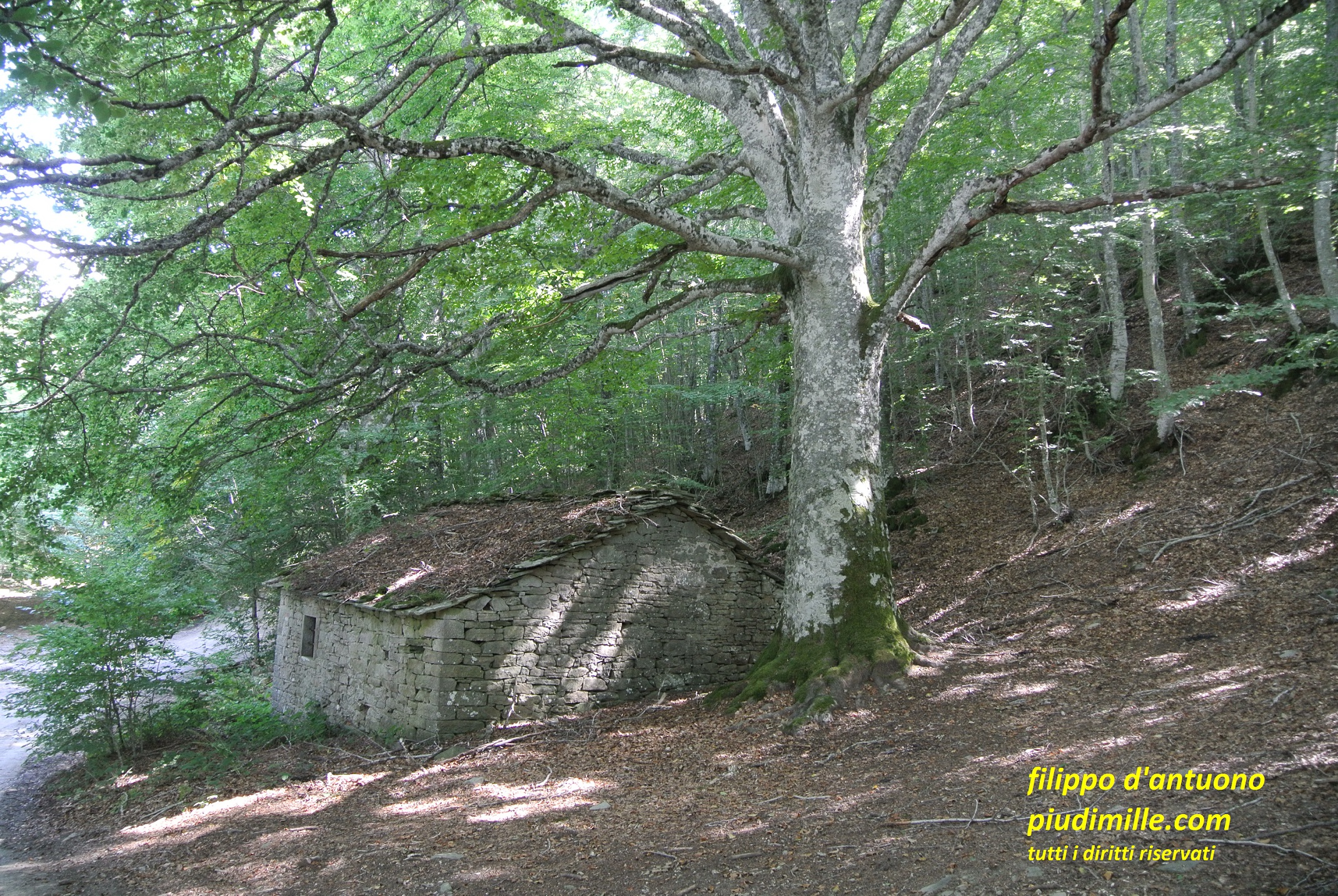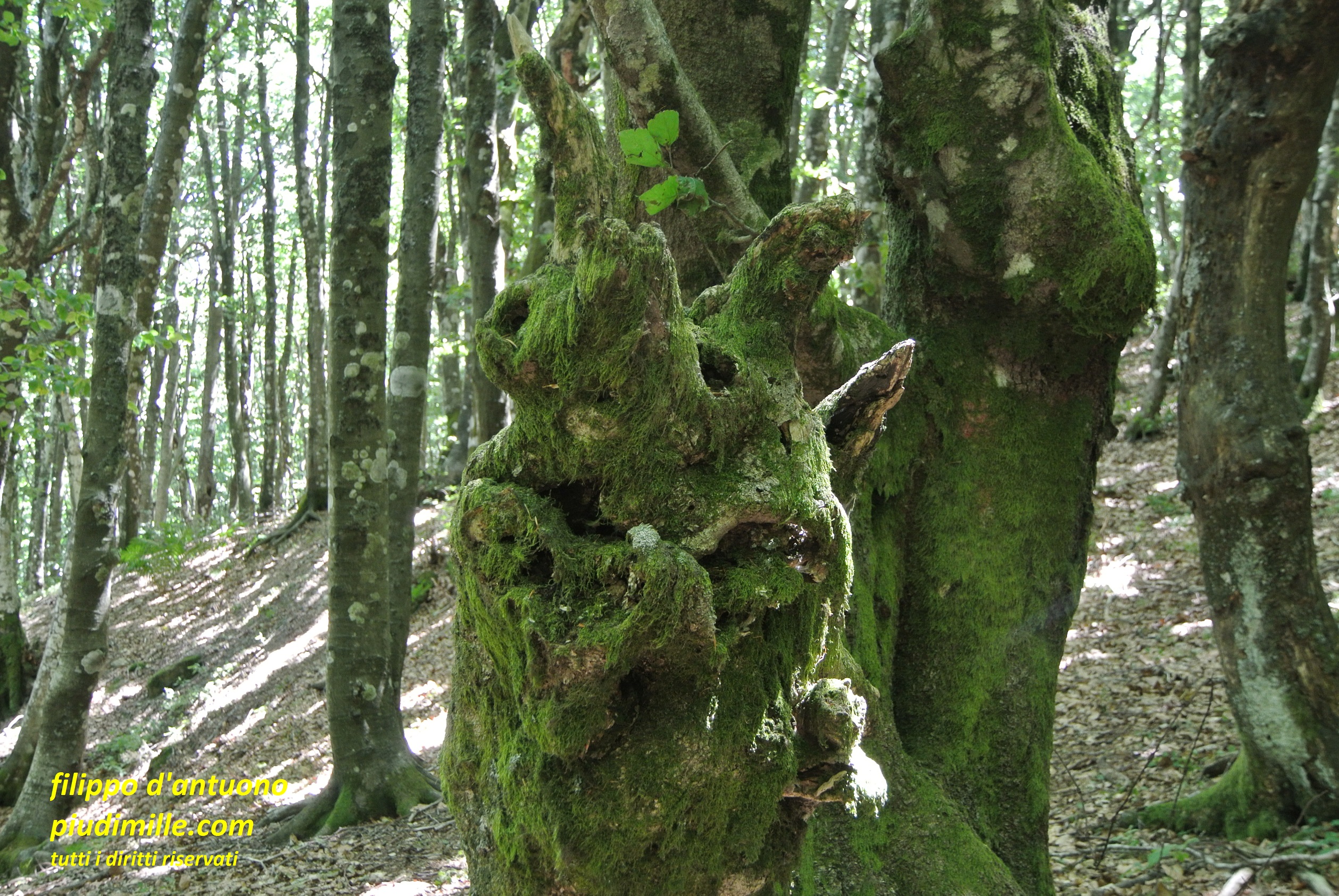Introduction to forest bathing – immersions in nature
Forest bathing: what is it
This practice is known by many names, among which: nature bathing, shnrin yoku, forest therapy…
In general, “forest bathing” encompasses nature experiences specifically aimed at establishing a sensorial connection with the environment around. Altuogh forest bathing experiences are often referred to as “walks”, the aim is not to reach a place or do physical exercise: sometimes the walking distance can be some hundred metres only. So, walking is only a mean to move around, also within a very small area.
So, forest bathing is mainly a special way of “staying in nature”, rather than “walking in nature”, with the main aim of recovering a personal connection to the environment, via our sensorial perceptions. Nature, trees, the environment around, become therefore our partners, rather than being instruments for this practice.
Well, forest bathing can be coupled in different ways with hiking or other physical activities in nature. But this will represent a later stage, once you will get acquainted with basic concepts and approaches to nature immersion.
“Forest” or “nature” bathing? Indeed, forest bathing, as a structured practice, was born in Japan, at the beginning of the eighties of the past century, in a typical forested context. So, forest trees played a prominent role, from the beginning, also because of some specific properties of some conifer species. However, nature bathing activities can be done in almost any environment, included small urban settings.
Forest bathing: what it does
Forest bathing can have different aims.
First of all, for people without any specific problems, forest bathing is a powerful tool of relaxation, awareness and, above all, slowing down. Slowing down primarily means to learn again to re-appropriate of adequate time to notice all what is around us and that we usually neglect, when we concentrate on specific work of for entertainment activities. Forest bating is aimed at concentrate on the present moment, reducing to a minimum the distractions, with the help of the environment around us. Forest and nature bathing aim exactly at this: to bring our focus on staying in nature, without any other goal than the sensory perception with which we may connect, each of which, even the smaller ones, may have its role.
In most occasions you will not forest bath alone: sharing your experiences with others will be a potent instrument to recover some hidden parts of you.
But, you can also be alone, once you get acquainted with the rationale; this is a rather mature approach, in which it could be more difficult to isolate the simple “staying in nature” from other activities; and the contribution of sharing with others will be missing, but positive surprises for sure will not.
I mentioned the absence of specific individual problems. Forest bating is potentially a very potent tool, that can bring back to the surface some latent conflict or trauma. The therapeutic function of forest bathing is beyond my expertise. So, my forest bathing practice is addressed to erach an aware form of relaxation and well-being, without any different scope.
Forest bathing: how to do
If you are a newcomer to this practice, you will probably obtain the maximum benefits starting with guided experiences. The guiding approaches can be substantially different, and maybe you can experiment more than one. Some can be rather interventionist, tending to orientate you someway. In reality, the more useful approach is probably a non-prescriptive one, simply helping to use your senses to establish your personal connection and dialogue with the environment: this is the best way by which you coul achieve a sense of deep connection and subsequent appreciation of sharing with others.
Forest bathing “walks” are mostly short. You will not therefore need any particular equipment, apart from comfortable clothing, adequate to season. Having a hat and insect repellant is always advisable, such as a sun screen cream. You may bring a small amount of water, also depending on place. Put everything into a small back pack, avoiding hand held or shoulder bags, that will impede you.
If you are not yet acquainted to “stay in nature”, yoi could also think of bringing a mat to sit on the ground: it may be a not wrong idea, if it is comfortable for you, especially sitting on humid ground, or in presence of thorns and acute stones. However, remember that your scope is a full connection with nature, that can be hampered by a mat, that will for sure obstacle your moving around.
The development of a typical guided experience proceeds with “invitations” given by your facilitator, or “guide”. The first invitations are aimed at helping the participants to establish a deep and intimate connection to the natural world; or, better, at entering in a different space from the usual routine, often referred to as “liminal”, or transition space; this condition should be then maintained throughout the experience.
The subsequent invitations do not prescibe to do any specific activity, rather representing thematic suggestions, to which everybody will respond by means of personal interpretation. These invitations will vary according to the conductor’s sensibility, specific circumstances, the environment and kind of participants.
A forest bathing session is generally ended with a moment of sharing experiences, that may vary according to the facilitator’s background and experience. The aim is to allow participants, if they wish, to summarise their experience and, at the end, exit from the “liminal space” to return, let’s say, to ordinary world.
A forest bathing experience can be compared to a workout session: at the end, we return to a baseline but, each time, having gained something. As with workouts, an adequate frequency of practice is the way to avoid losing your progresses, starting each time from an improved condition. The difference is that we are not training muscles, but our inner status and mood.
Forest bathing: where to do
As mentioned before, forest bathing can be carried out in almost any environment. A varied landscape, with alternating forest stretches and clearings is perhaps the ideal setting, allowing to develop diverse invitations, in connection with different features of the environment.
Some specific conditions may however facilitate forest bathing experiences.
An easy terrain is certainly preferable since, as stated, the aim of forest bathing is not physical fitness or ability testing. So, a smooth ground, with absence of very slippery or steep stretches is the best option in most cases. Some more demanding stretches may however be adequate to develop specific invitations.
Spaces of sufficient extension should be present along the trail, to allow the group sharing in circle after each invitation.
It is also positive that at least some parts of the trail are wide enough to allow people walking in pairs.
Water is often indicated as a fundamental element of forest bathing experiences; indeed, the presence of clean and easily accessible water can enrich a lot the experience; some walks may also be specifically centred on water; but it is also possible do to without any water!
Places disturbed by human activities may seem less favourable for nature connection. Sometimes, however, with particular reference to somewhat experienced participants, disturbed areas can represent an excellent opportunity to catch also the more hidden aspects of nature in a non-judgmental way, and use them to establish personal connections. Sometimes urban environments may also represent the only possibility of nature bathing practice for certain population segments.
Finally, there are also natural disturbs. Challenging conditions for too cold or hot temperature, strong wind or rain are not ideal for a complete forest bathing experience.









